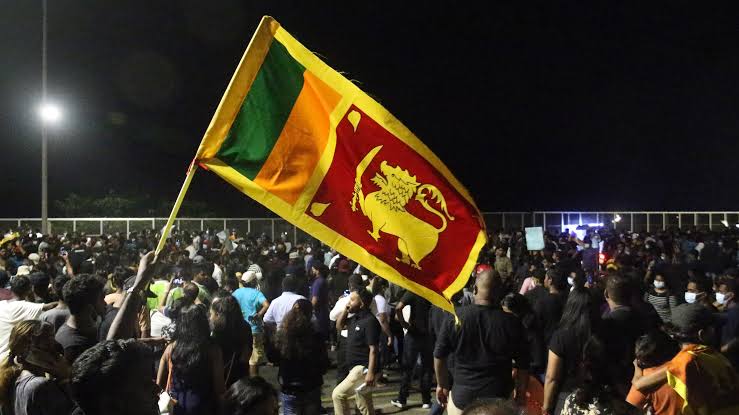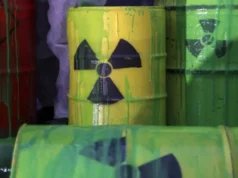Political crisis : A way out for Sri Lanka

Former President Chandrika Bandaranaike Kumaratunga has sent the following proposal to leaders of political parties and civil society organisations.
INTRODUCTION
This proposal is made in the present context of the major political crisis facing the country. The Government has totally failed to deliver proper governance, resulting in the complete breakdown of the economy.
The country has no Government. The vast majority of the citizens are out on the streets demanding the resignation of the President and the entire Government in a peaceful but powerful movement. Peoples’ power seems to have taken over the country.
This proposal is an attempt to find a resolution to the immediate problems arising from the situation. We have taken into serious consideration the need for a creation of a Government with the participation of Civil Society.
The present situation does not permit an election to be held immediately. It seems evident that an interim government is needed, in order to bring back political and social stability, and to resolve the most urgent economic issues.
The most feasible option is that of an interim Government that will function for a maximum period of 6 months, with the responsibility to restore order and stabilize the economy before calling for Parliamentary elections.
The proposal below has been worked out after dialogue with representatives of civil society, academics and the youthful protesters on the one hand, and taking into consideration the Constitutional stipulations as well as the existing Parliamentary situation, on the other.
PROPOSAL
1. An Interim Government will be formed for a maximum of 06 months.
2. (i) The Head of the Government shall be the Prime Minister elected from among the Members of Parliament, who enjoys the confidence of the majority of Parliament.
(ii) The Prime Minister will be the Head of Government and Head of the Cabinet.
(iii) The Cabinet of Ministers will be charged with the direction and control of the Government.
They shall be collectively responsible and answerable to Parliament.
3. The Cabinet will comprise of 12 Ministers from amongst the Members of the present Parliament as per Article 42 of the Constitution.
4. The Interim Government shall bring amendments to the Constitution which will :-
(a) abolish the office of the Executive President and replace it with that of a Head of State who will be the nominal President.
5. Strengthen the Constitutional Council and Independent Commissions.
The independence of all these Institutions from political influences shall be guaranteed.
Chairman of the Constitutional Council will be the Speaker of the Houses of Parliament. The Prime Minister and the Leader of the Opposition will be members, together with 7 others who will be distinguished citizens from the professions and academia.
The Chairman of the Council of State will be one of the 7 members.
Members of Parliament, Pradeshiya Sabhas and Local Government bodies shall not be members of the Constitutional Council.
All members of the Constitutional Council shall be selected from those who have no allegations of corruption or other wrong doing.
The members of the Independent Commissions shall be appointed by the Constitutional Council, selected by consensus, from among persons who have recognized expertise in their professions with no allegations of wrong doing.
The President of the Republic and the Leader of the Opposition shall nominate one member each. One-third of the total number of members shall be below 40 years of age and one-third of the total members shall be women.
6. There will be a Council of State for National Policy (COS).
The Cabinet shall act in consultation with the Council of State on all matters relating to the drafting and implementation of Policy, Laws and Regulations.
(a) The Council of State will promote democratic governance and prevent authoritarianism through the effective participation of citizens in decision making and implementation of government policy.
(b) Provision is made for 40% of the members of the Council to comprise of youth, permitting effective youth participation in the government.
(c) The Council of State shall act in close collaboration with the Cabinet of Ministers and other relevant government institutions in the performance of its duties.
(d)The Cabinet of Ministers is deemed to consult the COS on important laws and policies, before they are presented to Parliament and/or implemented.
(e) The Council of State will review important laws and policies before they are presented to Parliament by the government. It may also propose laws to the Cabinet and Government.
The Council of State will review policies of the Government, especially regarding Constitutional Amendments; the Economy; Governance, Education and matters relating to anti-corruption and transparency in government. The Council may also present proposals to the Government on the Economy and economic development and social matters.
(f) The Council of State will promote dialogue between the Government and the various sectors of civil society- professionals, business/private sector, academics and NGOs in the process of Government policy formulation and implementation.
7. The membership of the Council of State shall comprise of representatives of all ethnic and religious communities in Sri Lanka.
The term of office of the members of the Council will be 5 years and shall be concurrent with the term of office of the Parliament.
Elected members of political parties, individual MPs, Provincial Councillors and members of Local Government bodies will not be eligible for membership of the Council of State.
(i) The Council of State will be comprised of 36 members of which 27 shall be nominated by Civil Society Organizations, the professions, business and private sector, academics and NGOs and 09 members nominated by the PM and Leader of the Opposition.
The 27 Civil Society representatives will be nominated as follows: –
(ii) A total of 16 members will be from the professional associations in the following fields on the basis of one /two representatives from each association:
a) The Legal Profession – 02
b) The Medical Profession – 02
c) Accountants – 02
d) IT Professionals – 1/2
e) Engineers – 01
f) Surveyors &Valuers – 02
g) Teachers& Principals – 02
h) Retired Senior Public servants – 03
Other professions
(iii) Representation from the following fields will be as follows:
a) Artists – 02
b) Private sector- 05
c) Academics – 02
d) NGOs – 02
(iv) not less than 40% of the total no.of members shall be below the age of 40 years, (15)
(v) 40 % of the total shall be women as per 6 (ii)and (iii) above. (15)
N.B. This draft needs to be perfected in legal terms.



